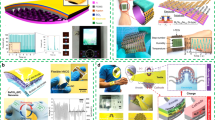
Overview
- Explains how IoT sensors can be energy-positive, generating an energy surplus
- Demonstrates in detail how energy harvesting transducers work and their potential to autonomously power IoT devices
- Explains activity recognition using energy harvesters as activity sensors as well source of energy
Part of the book series: Green Energy and Technology (GREEN)
Access this book
Tax calculation will be finalised at checkout
Other ways to access
About this book
This book covers a broad range of topics related to self-powered activity recognition. The main topics of this book include wearables, IoT, energy harvesting, energy harvesters as sensors, activity recognition and self-powered operation of IoT devices. This book starts with the introduction of wearable IoT devices and activity recognition and then highlights the conventional activity recognition mechanisms. After that, it describes the use of energy harvesters to power the IoT devices. Later, it explores the use of various energy harvesters as activity sensors. It also proposes the use of energy harvesters as simultaneous source of energy and context information and defines the emerging concept of energy-positive sensing compared to conventional energy-negative sensing. Finally, it explores sensor/signal fusion to enhance the performance using multiple energy harvesters and charts a way forward for future research in this area.
This book covers all important and emerging topics that have significance in the design and implementation of autonomous wearable IoT devices. We believe that this book will lay the foundation for designing self-powered IoT devices which can ultimately replace the conventional wearable IoT devices which need regular recharging and replacement.
Similar content being viewed by others
Keywords
Table of contents (8 chapters)
-
Front Matter
-
Overview of IoT and Activity Recognition
-
Front Matter
-
-
Energy Harvesting
-
Front Matter
-
-
Back Matter
Authors and Affiliations
About the authors
Bibliographic Information
Book Title: Self-Powered Internet of Things
Book Subtitle: How Energy Harvesters Can Enable Energy-Positive Sensing, Processing, and Communication
Authors: Muhammad Moid Sandhu, Sara Khalifa, Marius Portmann, Raja Jurdak
Series Title: Green Energy and Technology
DOI: https://doi.org/10.1007/978-3-031-27685-9
Publisher: Springer Cham
eBook Packages: Energy, Energy (R0)
Copyright Information: The Editor(s) (if applicable) and The Author(s), under exclusive license to Springer Nature Switzerland AG 2023
Hardcover ISBN: 978-3-031-27684-2Published: 17 June 2023
Softcover ISBN: 978-3-031-27687-3Due: 18 July 2023
eBook ISBN: 978-3-031-27685-9Published: 16 June 2023
Series ISSN: 1865-3529
Series E-ISSN: 1865-3537
Edition Number: 1
Number of Pages: XX, 165
Number of Illustrations: 1 b/w illustrations, 69 illustrations in colour
Topics: Nanotechnology and Microengineering, Cyber-physical systems, IoT, Professional Computing, Communications Engineering, Networks



